HIPAA compliance and network security are critical for healthcare organizations. Protecting patient data isn’t just a legal requirement-it’s a fundamental aspect of providing quality care.
At ScriberJoy, we understand the challenges healthcare providers face in maintaining secure networks while ensuring accessibility. This guide will explore best practices for HIPAA compliance in network security, helping you safeguard sensitive information and avoid costly penalties.
Understanding HIPAA Compliance in Network Security
The Foundation of Patient Data Protection
HIPAA, the Health Insurance Portability and Accountability Act, stands as the cornerstone of patient data protection in the United States. Enacted in 1996, HIPAA establishes the standard for safeguarding sensitive patient data. It requires healthcare providers, health plans, and healthcare clearinghouses to implement strict security measures to protect electronic protected health information (ePHI).
Core Components of HIPAA Network Security
The HIPAA Security Rule mandates three types of safeguards: administrative, physical, and technical. For network security, these translate into specific requirements:
- Access Control: Organizations must implement unique user IDs, emergency access procedures, automatic logoff, and encryption and decryption.
- Audit Controls: Hardware, software, and procedural mechanisms must record and examine access and other activity in information systems containing ePHI.
- Integrity Controls: Measures must ensure that ePHI is not improperly altered or destroyed.
- Transmission Security: Technical security measures must guard against unauthorized access to ePHI transmitted over electronic networks.
The High Stakes of Non-Compliance
The consequences of failing to meet HIPAA standards are severe. In 2023, the Office for Civil Rights (OCR) reported a record 725 healthcare data breaches, exposing over 133 million records. This surge in breaches has led to increased scrutiny and enforcement.
Financial penalties for HIPAA violations can reach staggering amounts. Fines can escalate to $1.5 million per violation category per year. In 2018, Anthem Inc. paid a record $16 million settlement for a massive data breach affecting nearly 79 million people.
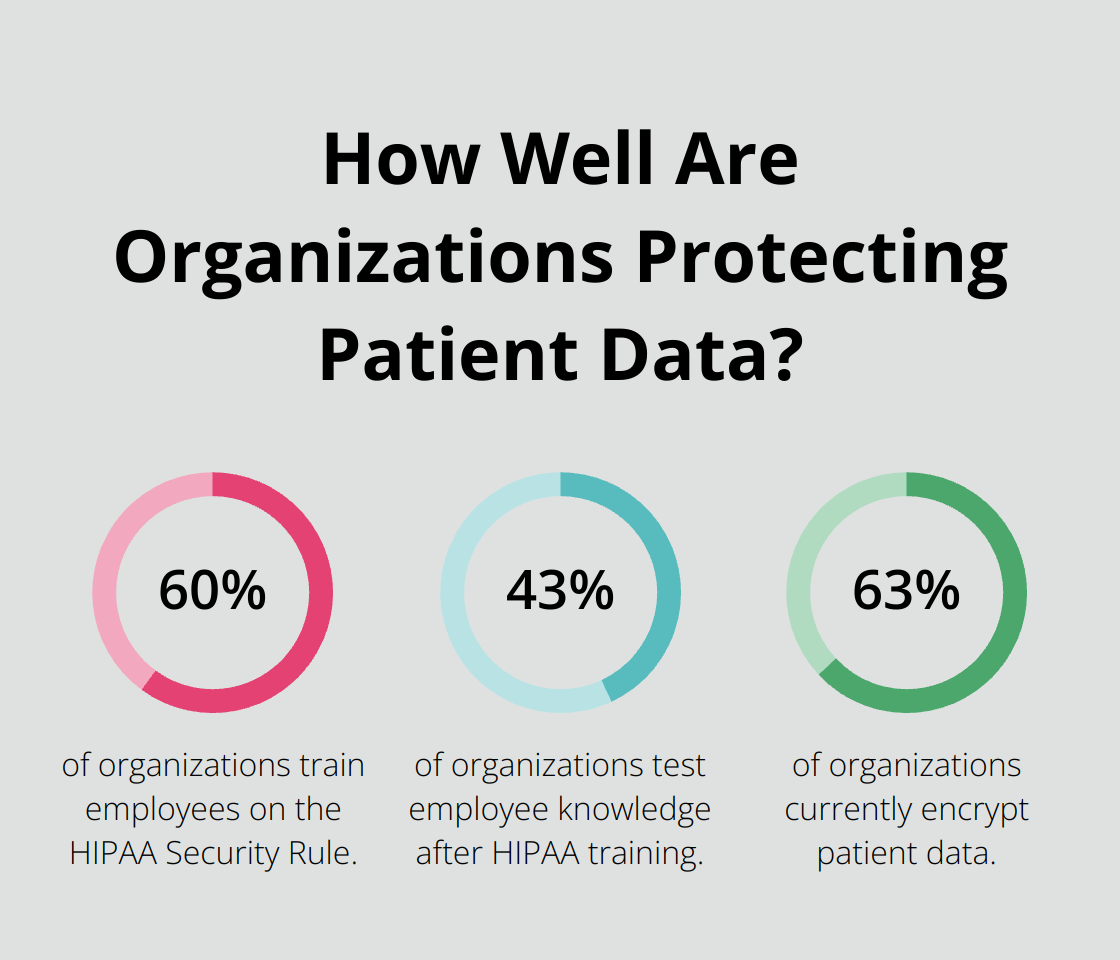
Non-compliance can result in more than just fines. Organizations face potential criminal charges, loss of medical licenses, and mandatory corrective action plans. The reputational damage can prove equally devastating, eroding patient trust and potentially leading to loss of business.
Proactive Steps Towards Compliance
Healthcare organizations must take proactive steps to avoid these pitfalls. Regular risk assessments play a vital role. The OCR provides guidance for conducting effective risk analyses to help entities comply with the Security Rule.
Employee training forms another critical component. Recent studies show that only 60% of organizations train employees on the HIPAA Security Rule, and a mere 43% test their knowledge after training. This gap in education represents a significant vulnerability.
Robust encryption for data at rest and in transit is non-negotiable. Yet, only 63% of organizations currently encrypt patient data, indicating room for improvement across the industry.
Healthcare organizations can build a strong foundation for network security by understanding and implementing these HIPAA requirements. This foundation not only protects patient data but also safeguards the organization’s interests. The next section will explore essential network security measures that organizations can implement to ensure HIPAA compliance and enhance their overall security posture.
How to Implement Essential Network Security Measures
Healthcare organizations must implement robust network security measures to protect sensitive data and maintain HIPAA compliance. This chapter explores key strategies to enhance your organization’s security posture.
Multi-Factor Authentication: Your First Line of Defense
Multi-factor authentication (MFA) serves as a powerful tool in your security arsenal. Implementing MFA can drastically reduce the risk of unauthorized access, even if passwords are compromised.
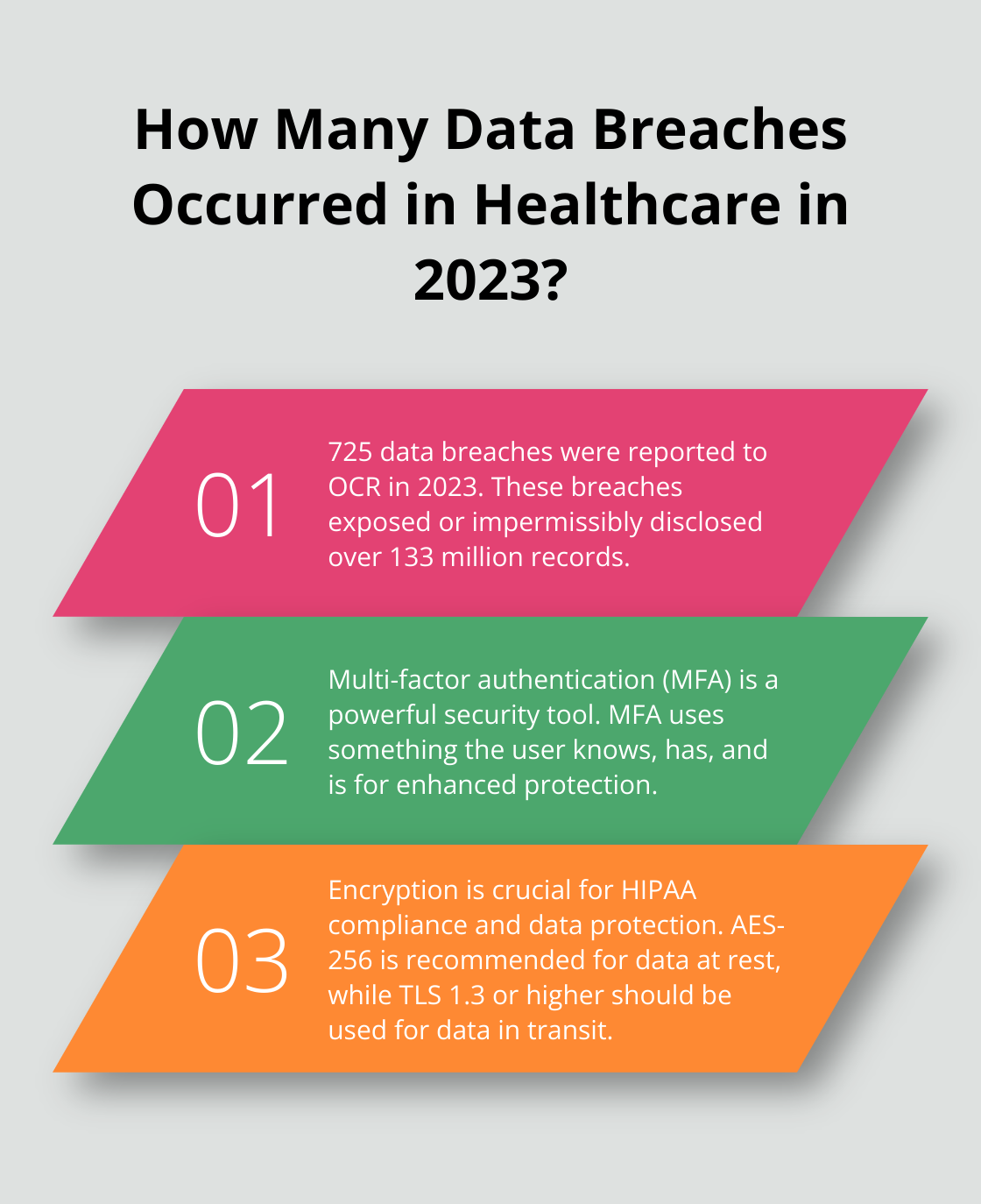
To set up MFA effectively, use a combination of:
- Something the user knows (e.g., a password)
- Something they have (e.g., a smartphone for receiving codes)
- Something they are (e.g., biometric data like fingerprints)
This layered approach makes it exponentially harder for attackers to gain access to your systems.
Encryption: Protecting Data at Every Turn
Encryption is non-negotiable for HIPAA compliance. Recent data shows that in 2023, 725 data breaches were reported to OCR, exposing or impermissibly disclosing more than 133 million records.
For data at rest, use strong encryption algorithms like AES-256. Enable full-disk encryption on all devices, including mobile ones. For data in transit, implement TLS 1.3 or higher for all network communications. This includes not just email, but also any web applications or APIs that handle patient information.
Patch Management: Closing the Door on Vulnerabilities
Regular system updates and patch management often get overlooked but play a critical role in maintaining a secure network. Cybercriminals frequently exploit known vulnerabilities in outdated software.
Implement an automated patch management system that regularly scans for and applies updates to all systems and applications. Prioritize critical security patches and try to apply them within 24 hours of release. For larger organizations, consider a phased approach to minimize disruption while ensuring timely updates.
Continuous Risk Assessment: Stay Ahead of Threats
HIPAA requires regular risk assessments, but the frequency and depth of these assessments can make a significant difference.
Implement continuous risk assessment tools that provide real-time insights into your network’s vulnerabilities. Use automated scanning tools to regularly check for misconfigurations, weak passwords, and potential entry points for attackers. Combine these automated tools with periodic manual penetration testing to identify less obvious vulnerabilities.
The implementation of these essential network security measures significantly enhances HIPAA compliance and overall security posture. However, maintaining a secure network environment requires more than just technical solutions. The next chapter will explore the challenges healthcare organizations face in balancing security with accessibility and managing third-party vendors while staying compliant with HIPAA regulations.
Navigating HIPAA Compliance Hurdles
The Accessibility vs. Security Tightrope
Healthcare providers need quick access to patient data, but this can conflict with stringent security measures. A study aimed to evaluate and quantify health care workers’ frustration with technology and its relationship with emotional exhaustion.
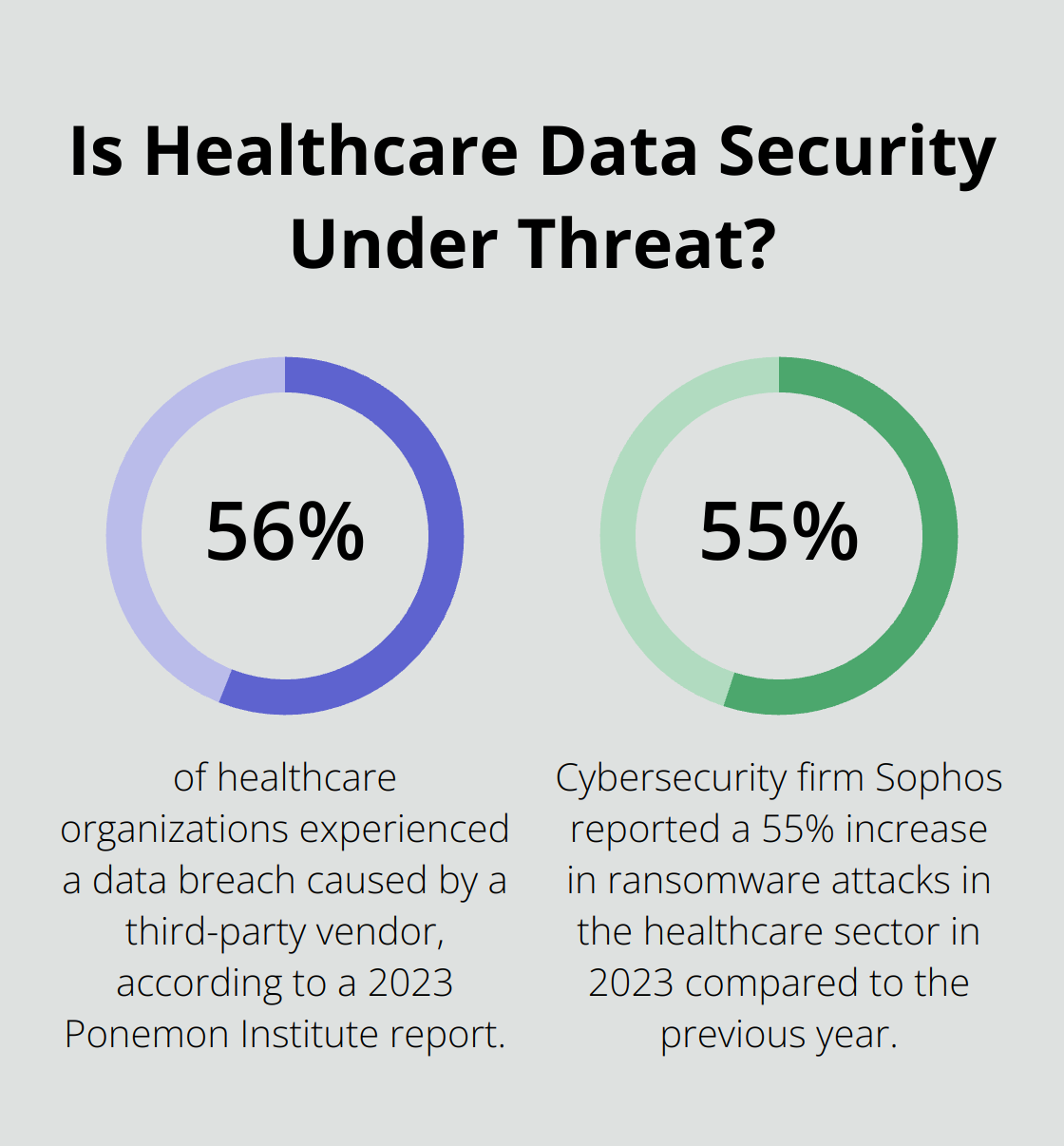
To address this, healthcare organizations should implement role-based access control (RBAC) tailored to job functions. This allows staff to access necessary information without exposing the entire network. Additionally, using single sign-on (SSO) solutions reduces login fatigue while maintaining security. The Healthcare Information and Management Systems Society (HIMSS) reports that SSO can save clinicians up to 45 minutes per shift, improving both efficiency and compliance.
Third-Party Vendor Management Challenges
A 2023 Ponemon Institute report revealed that 56% of healthcare organizations experienced a data breach caused by a third-party vendor. This highlights the critical need for robust vendor management practices.
Healthcare organizations should create a comprehensive vendor risk assessment process. They need to evaluate potential partners based on their security practices, compliance history, and data handling procedures. Implementing continuous monitoring tools tracks vendor performance and security posture in real-time. The Health Information Trust Alliance (HITRUST) recommends annual audits of high-risk vendors and quarterly reviews of their security reports.
Keeping Pace with Evolving Threats
Cyber threats evolve rapidly, and regulations struggle to keep up. The healthcare sector saw a 55% increase in ransomware attacks in 2023 compared to the previous year (according to cybersecurity firm Sophos).
A study identified the main challenges faced by health care organizations, including inadequate endpoint device management, lack of security awareness, and insecure remote work environment. Healthcare organizations should invest in threat intelligence services that provide real-time updates on emerging risks. They need to conduct regular tabletop exercises to test their incident response plan. The Department of Health and Human Services (HHS) recommends updating risk assessments at least annually or whenever significant changes occur in the IT environment.
Regulatory Compliance Updates
Keeping up with regulatory changes presents another challenge for healthcare organizations. They should consider appointing a dedicated compliance officer or team to monitor updates. The Office for Civil Rights (OCR) provides guidance and webinars on new regulations. Healthcare organizations should prioritize attending these sessions and implement changes promptly.
Balancing Cost and Security
Implementing robust security measures often comes with significant costs. Healthcare organizations must balance the need for strong security with budget constraints. They should prioritize investments in areas that provide the most significant risk reduction (e.g., encryption, access controls, and staff training). Organizations can also explore cost-effective solutions like cloud-based security services or managed security service providers (MSSPs) to enhance their security posture without breaking the bank.
Final Thoughts
HIPAA compliance and network security form the cornerstone of modern healthcare operations. Healthcare organizations must implement strong access controls, encryption protocols, and regular system updates to create a secure network environment. Continuous risk assessments and audits play a vital role in identifying vulnerabilities and staying ahead of evolving threats.
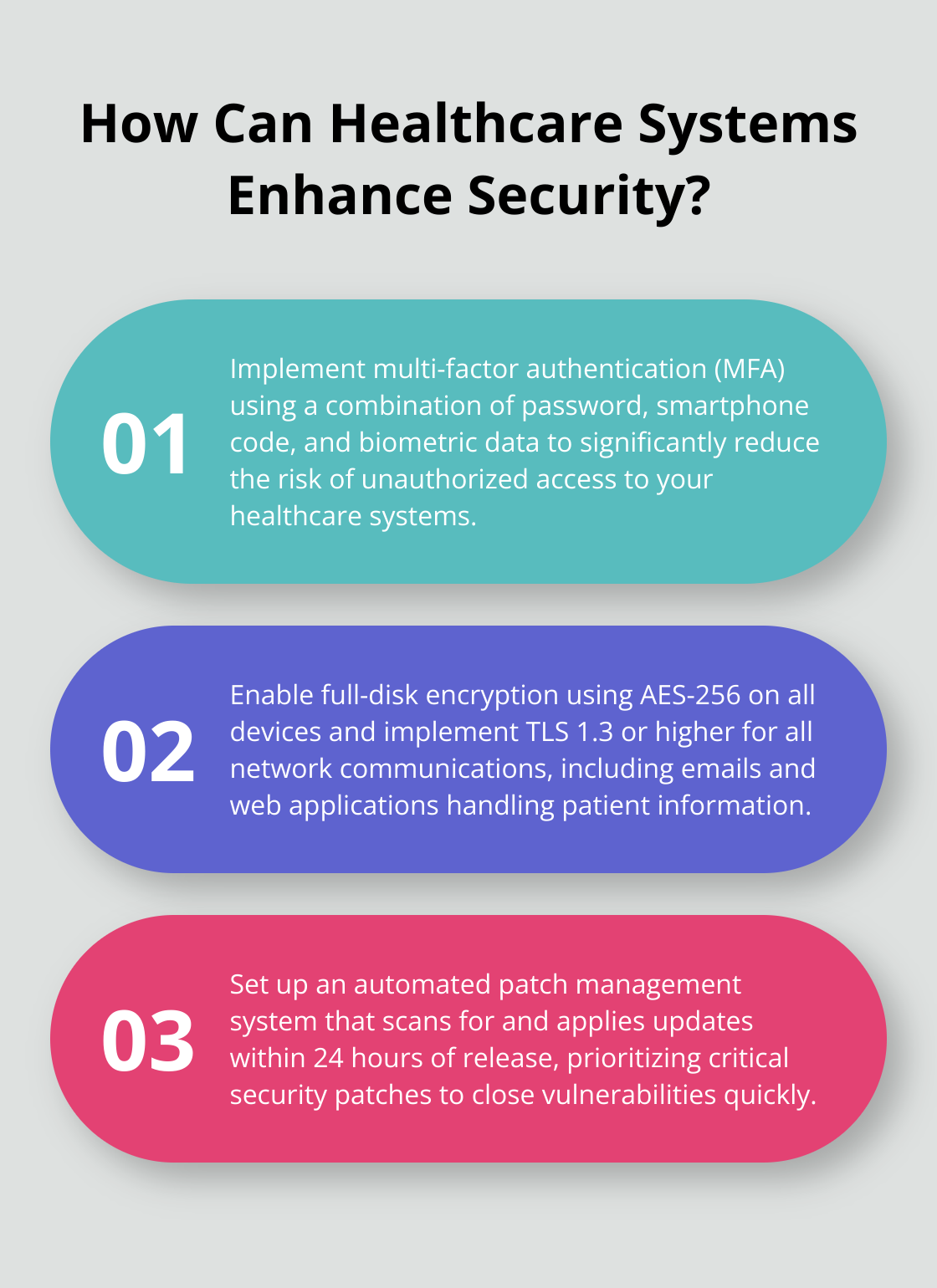
The challenges in maintaining HIPAA-compliant networks require ongoing vigilance and adaptation. Healthcare providers must balance security with accessibility, manage third-party vendors effectively, and keep pace with emerging cyber threats. These efforts protect patient data, maintain trust, and allow healthcare providers to focus on delivering high-quality care.
At ScriberJoy, we understand the importance of HIPAA compliance in healthcare operations. Our medical transcription software helps healthcare providers maintain accurate and secure patient records while focusing on patient care. We strive to support healthcare organizations in their efforts to achieve HIPAA compliance network security, enabling them to create a secure environment that protects patient data and supports the delivery of high-quality care.
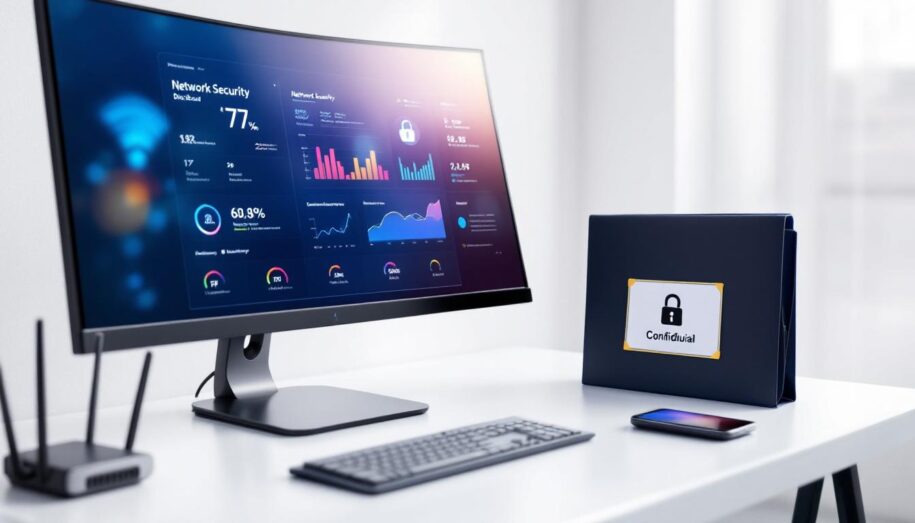
Leave a Reply
You must be logged in to post a comment.